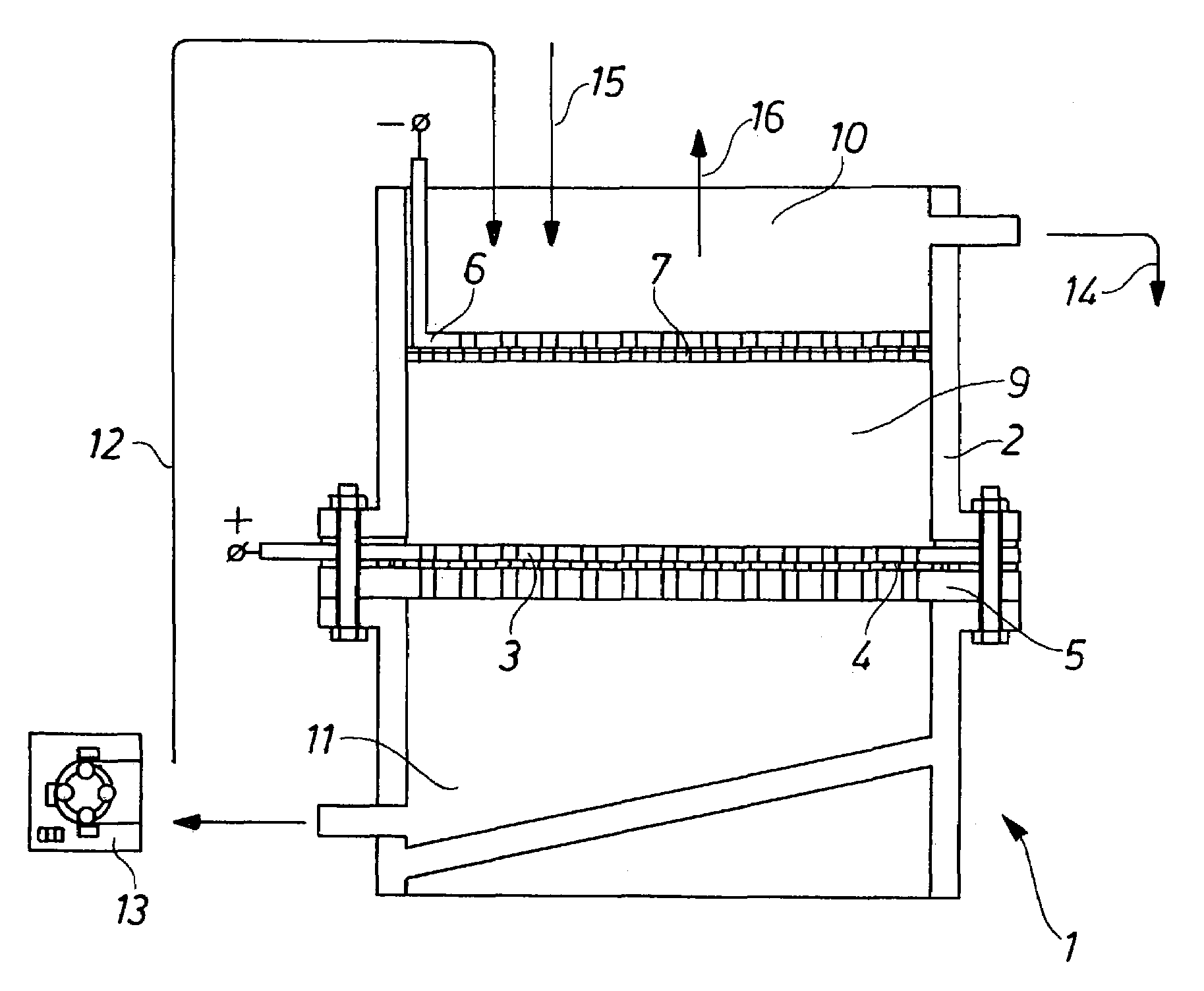Process for the electrochemical decomposition of powders and electrolysis cells suitable therefor
a technology of electrolysis cell and electrochemical decomposition powder, which is applied in the direction of electrolysis coating, alkali metal halide, electrolysis components, etc., can solve the problems of high energy consumption, disadvantage of electrolysis process, and need environmentally unfriendly reagents, and achieves the effect of low process cost and better choi
- Summary
- Abstract
- Description
- Claims
- Application Information
AI Technical Summary
Problems solved by technology
Method used
Image
Examples
example 1
[0025]In electrolysis equipment according to the invention and corresponding to FIG. 1, with a circular base area of 154 cm2, 3059 g of Re / W scrap (3% Re, 97% W, average particle size approximately 100 μm) in powder form are poured onto a perforated metal plate (for example Ni) connected as the anode; the surface of the powder is covered first with a separator and then with a cathodically connected, likewise perforated, vertically mobile metal plate which is lowered by its own weight. A filter cloth, which in turn rests on a pierced base for stabilization, is stretched below the anodic metal plate. This basic equipment combines both the function of an electrolysis cell and also the function of a filter component, and it will be referred to below overall as a filtration electrolysis cell. The filtration electrolysis cell is provided with an internal circuit, in which the alkaline electrolyte is sucked through the powder bed with a circulation volume of 40 ml / h·cm2 by means of a pump....
PUM
| Property | Measurement | Unit |
|---|---|---|
| current efficiencies | aaaaa | aaaaa |
| particle sizes | aaaaa | aaaaa |
| particle sizes | aaaaa | aaaaa |
Abstract
Description
Claims
Application Information
 Login to View More
Login to View More - R&D
- Intellectual Property
- Life Sciences
- Materials
- Tech Scout
- Unparalleled Data Quality
- Higher Quality Content
- 60% Fewer Hallucinations
Browse by: Latest US Patents, China's latest patents, Technical Efficacy Thesaurus, Application Domain, Technology Topic, Popular Technical Reports.
© 2025 PatSnap. All rights reserved.Legal|Privacy policy|Modern Slavery Act Transparency Statement|Sitemap|About US| Contact US: help@patsnap.com


